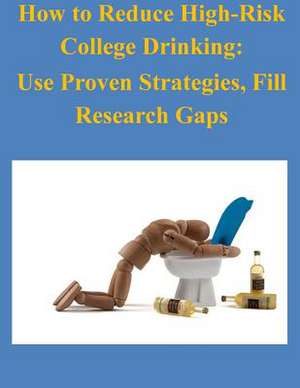How to Reduce High-Risk College Drinking
Autor National Institute on Alcohol Abuse anden Limba Engleză Paperback
Preț: 96.45 lei
Nou
Puncte Express: 145
Preț estimativ în valută:
18.46€ • 19.32$ • 15.27£
18.46€ • 19.32$ • 15.27£
Carte disponibilă
Livrare economică 15-29 martie
Preluare comenzi: 021 569.72.76
Specificații
ISBN-13: 9781500283933
ISBN-10: 1500283932
Pagini: 64
Dimensiuni: 216 x 279 x 3 mm
Greutate: 0.17 kg
Editura: CREATESPACE
ISBN-10: 1500283932
Pagini: 64
Dimensiuni: 216 x 279 x 3 mm
Greutate: 0.17 kg
Editura: CREATESPACE
